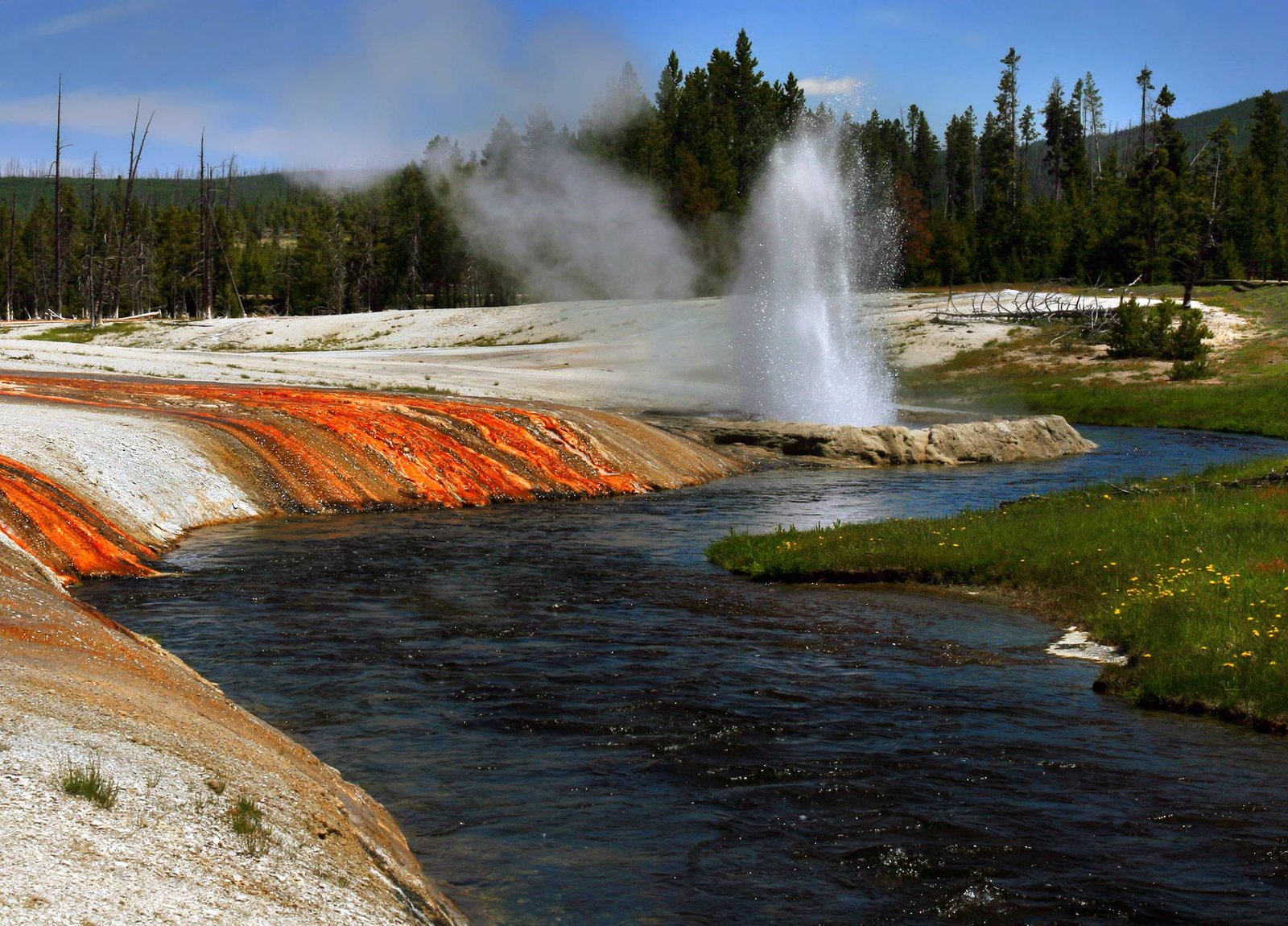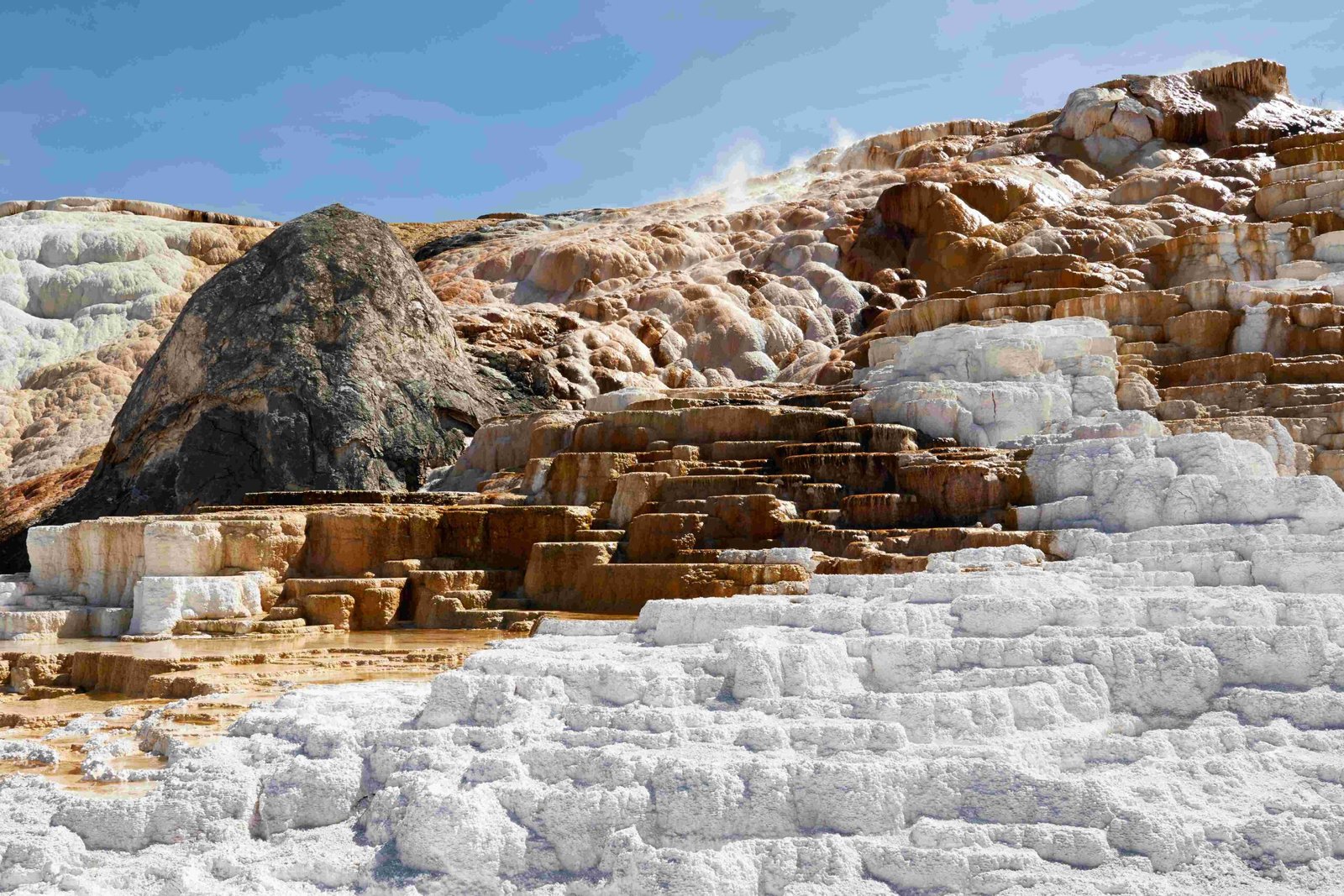Obsidian Cliff in Yellowstone National Park is a remarkable geological formation and archaeological site. Located about six miles north of Norris Geyser Basin, this 180-foot high cliff of black volcanic glass was formed from rapidly cooling lava approximately 106,000 years ago. It served as a significant source of obsidian for Native American tool-making for thousands of years, with artifacts found as far away as Ohio and Texas.
What is the geological significance of Obsidian Cliff?

Obsidian Cliff is a testament to Yellowstone’s volcanic history and holds immense geological importance:
- Formation: The cliff is composed of volcanic glass formed from rapidly cooling lava with low volatile content.
- Age: The obsidian-bearing lava flow, known as the Obsidian Creek Member of the Plateau Rhyolite, erupted around 106,000 years ago.
- Structure: The cliff exhibits columnar jointing, a result of contraction during cooling.
- Composition: The obsidian here is exceptionally pure, making it ideal for tool-making.
This unique formation provides insights into Yellowstone’s volcanic past and the geological processes that shaped the region.
How was Obsidian Cliff used by Native Americans?

Obsidian Cliff played a crucial role in Native American culture and trade:
- Tool-making: The site was extensively used for creating sharp tools and weapons.
- Quarrying: 59 documented quarry pits and tool workshop locations have been identified.
- Trade: Obsidian from this source has been found in artifacts across North America, indicating extensive trade networks.
- Cultural significance: The site held spiritual and practical importance for many Native American tribes.
The widespread distribution of Obsidian Cliff artifacts demonstrates its significance in prehistoric North American trade and culture.
Where is Obsidian Cliff located within Yellowstone National Park?
Obsidian Cliff is situated in a prime location within Yellowstone:
- Distance: Approximately 6 miles north of Norris Geyser Basin
- Route: Along Highway 89 towards Mammoth Hot Springs
- Coordinates: 44°48’N 110°44’W
- Elevation: About 7,400 feet (2,256 meters) above sea level
This location makes it easily accessible for visitors traveling between major park attractions.
How can visitors access Obsidian Cliff?
Accessing Obsidian Cliff is relatively straightforward:
- Drive north from Norris Geyser Basin on Highway 89.
- Look for the designated parking area about 6 miles from Norris.
- Park your vehicle in the provided lot.
- Take a short walk from the parking area to view the cliff.
No extensive hiking is required, making it accessible for most visitors.
What amenities are available for visitors at Obsidian Cliff?
While Obsidian Cliff itself is a natural site with minimal development, some amenities are available:
| Amenity | Availability | Notes |
|---|---|---|
| Parking | Yes | Designated area near the cliff |
| Restrooms | Limited | Available at nearby facilities like Norris Geyser Basin |
| Visitor Centers | Nearby | At Norris Geyser Basin and Mammoth Hot Springs |
| Interpretive Signs | Yes | Providing information about the site’s geology and history |
| Accessibility | Moderate | Short walk required, may not be fully wheelchair accessible |
Visitors should come prepared, as immediate facilities are limited.
What are the best times to photograph Obsidian Cliff?
For photographers, Obsidian Cliff offers unique opportunities:
- Early Morning: Soft light enhances the cliff’s textures and colors.
- Late Afternoon: Golden hour light can create dramatic shadows and highlights.
- Overcast Days: Diffused light can help capture the obsidian’s glassy texture without glare.
Consider the season and weather conditions for varied photographic experiences.
What photography equipment is recommended for capturing Obsidian Cliff?
To best capture Obsidian Cliff’s beauty, consider the following equipment:
- Wide-angle lens for landscape shots
- Macro lens for detailed textures of obsidian
- Tripod for stability in low light conditions
- Polarizing filter to reduce glare on the obsidian surface
- Neutral density filters for long exposures in bright conditions
Experiment with different setups to capture the cliff’s unique characteristics.
How does Obsidian Cliff contribute to our understanding of Yellowstone’s geology?
Obsidian Cliff provides valuable insights into Yellowstone’s geological history:
- It represents a specific type of volcanic activity in the park’s past.
- The cliff’s structure and composition help geologists understand the cooling processes of lava flows.
- Its age contributes to the timeline of Yellowstone’s volcanic events.
- The purity of the obsidian offers clues about the composition of Yellowstone’s magma chambers.
Studying Obsidian Cliff enhances our overall understanding of Yellowstone’s complex geological story.
What conservation efforts are in place to protect Obsidian Cliff?
To preserve this important site, several conservation measures are in place:
- National Historic Landmark: Designated in 1996, providing federal protection.
- Artifact Collection Prohibition: Removing obsidian from the site is strictly forbidden.
- Educational Programs: Raising awareness about the site’s importance and fragility.
- Limited Development: Minimal infrastructure to maintain the site’s natural state.
- Ongoing Research: Scientific studies to better understand and protect the resource.
These efforts aim to preserve Obsidian Cliff for future generations of visitors and researchers.
Obsidian Cliff in Yellowstone National Park stands as a testament to the region’s volcanic history and Native American heritage. Its unique geological features, combined with its archaeological significance, make it a must-visit site for those interested in both natural and cultural history. As you plan your visit to Yellowstone, be sure to include this remarkable formation in your itinerary, and remember to respect its protected status for future generations to enjoy and study.
References:
1. National Park Service: Obsidian: The MVP of Yellowstone’s \”Stones\”
2. U.S. Geological Survey: Obsidian Cliff
3. National Park Service: Obsidian Cliff – Yellowstone National Park
